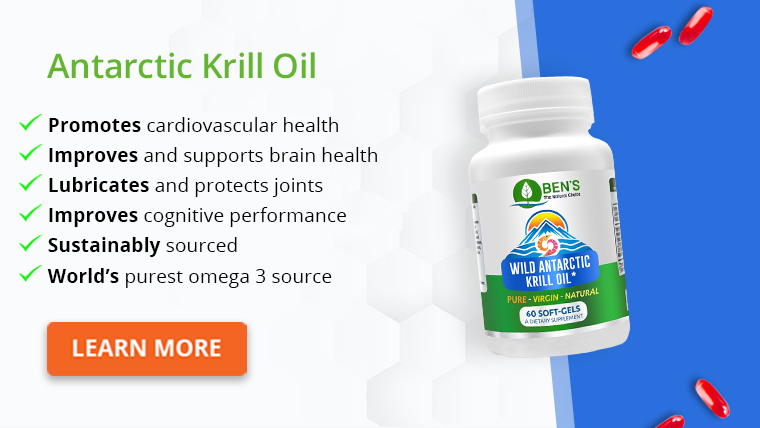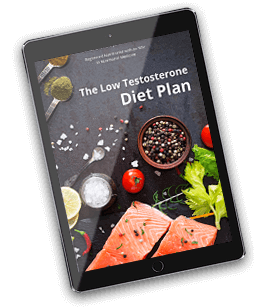Epididymitis is one of the most common results of pain in the scrotum.
Research estimates there are 600,000 cases of epididymitis in the US.
It is a common disease in non-specific infection of the male reproductive system, primarily in young and middle-aged people.
It is characterized by sudden pain in the scrotum, fever, and swelling. The inflammation also can cause clinical infertility.
However, diet plays a significant role in treating and relieving epididymitis.
Certain foods can boost recovery, while others can worsen the symptoms and lead to severe complications.
Let’s get clear on what epididymitis is so you can keep an eye out for it.
What is epididymitis?
Epididymitis is an inflammation of the epididymis, the coiled tube at the back of the testicle that carries and stores sperm that keeps and carries sperm. It typically happens on one testicle that lasts for six weeks.
What causes epididymitis?
Common causes of epididymitis include:
- Bacterial infection from the urinary tract, prostate, or kidney
- STIs such as gonorrhea and chlamydia
- Viral infections such as the mumps virus
- Urine flowing backward into the epididymis
- Trauma to the groin
- Certain medications
- Autoimmune diseases
Most of these reasons make it possible for pathogens can take the opportunity to invade the epididymis and cause inflammation. Although it can affect males of any age, epididymitis is diagnosed more often in males aged 14 to 35.
What are the symptoms of epididymitis?
Infected persons may experience:
- Redness and swelling of the scrotum
- Pain in the testicle that sometimes transcends to the rest of the groin
- Painful and frequent urination
- Abnormal discharge from the penis
- Blood in semen
- Discomfort or pain in the pelvic area
Some less common symptoms are fever and chills. Never ignore scrotal pain or swelling. Also, see a doctor if you have discharge from your penis or pain when you urinate.
Epididymitis can sometimes be mistaken for spermatocele. Spermatocele is a cyst that develops in the epididymis and contains fluid and sperm.
There isn’t an apparent cause of spermatocele, but it is believed to be due to blockage in one of the epididymis. It is painless and doesn’t require treatment. However, it can cause discomfort and heaviness in the testicle.
Treatment to shrink a spermatocele includes medication like ibuprofen, surgery, aspiration, and sclerotherapy.
You can also use natural remedies to shrink a spermatocele. For example, a balanced diet with less fat and more iodine can help. Additionally, you can topically apply iodine, magnesium, and chromium chloride in spermatocele treatment.
What are the complications of epididymitis?
When the epididymis gets infected by bacteria, it gets swollen and starts to pain. So it is good to take treatment earlier.
When the epididymis gets infected, then epididymitis occurs. It usually occurs in men of all ages.
When left untreated, epididymitis can develop complications, including hydrocele. Hydrocele is a fluid-filled swelling around the testicle.
It occurs more commonly in infants than in adults. It is harmless and temporary in most cases and can disappear without treatment.
Hydrocele is a painless swelling that can develop without a cause. A rare effect of epididymitis is fertility issues in men. Early diagnosis and treatment can prevent these complications.
Get Your FREE Low Testosterone Diet Plan
- The ultimate testosterone boosting diet
- combined with exercise & lifestyle advice
- Developed exclusively by our nutritionist
How does diet affect epididymitis?
Aside from getting proper treatment for epididymitis, diet plays a crucial role in recovery. An appropriate plan of diet can reduce symptoms and fasten the healing process.
In the same vein, a bad diet can do the opposite: worsen the pain and discomfort, thereby prolonging healing.
Eating foods that reduce pain and inflammation is a productive dietary approach for managing epididymitis.
For instance, focus on eating fiber-rich foods, such as fruits, vegetables, beans, whole grains, and nuts. These aid in testicular health.
It’s also advisable to opt for organic foods rather than processed foods. In addition, patients with epididymitis should include plant-based foods and low-fat dairy products in their diet plan.
If you have epididymitis, there are some foods you should eat less or avoid, including processed, spicy, sugary, or high-fat foods. These foods can aggravate inflammation and worsen epididymitis.
18 foods to avoid with epididymitis
When it comes to eating right to aid healing and alleviating pain in epididymitis and boosting testicular health, there are some foods you need to avoid.
Generally, these are primarily foods containing a lot of fat, processed foods, sugary foods, and spicy foods. The reason why is because these foods fuel inflammation.
Epididymitis foods to avoid or limit include:
- Sugary foods, sweets, and artificial sweeteners
- Caffeine
- Alcohol
- Processed foods
- White flour products
- Fast foods
- Hydrogenated, trans fat, deep-fried, greasy foods
- Margarine
- Sodas
- Spicy food; onions, pepper, mustard, fennel
In addition to avoiding the foods above, people with epididymitis should avoid drinking or smoking.

23 foods to eat with epididymitis
When it comes to dieting right for testicular health, you want to eat foods that fight and reduce inflammation and avoid eating pro-inflammatory foods.
These foods include:
Inflammation-fighting foods for testicles:
- Spinach
- Blueberries
- Strawberries and other flavonoid-rich foods
Vitamin C-rich foods for testicular health:
- Kiwi
- Orange
- Watermelon
- Lemon
- Grapefruit
- Bitter melon
- Tomatoes
Fiber-rich testis foods:
- Banana
- Sweet potatoes
- Celery
Whole grains, nuts, beans, and seeds:
- Walnuts
- Flaxseed
- Pumpkin seeds
Omega-3 fat-rich foods:
- Salmon
- Mackerel
- Herring
- Sardine
- Canola Oil
- Fish Oil

Can epididymitis be cured?
You might wonder, can epididymitis be cured? Yes, epididymitis is usually treated with antibiotics.
In the case of epididymitis caused by STIs, the sexual partners involved need to be treated. Once on antibiotics, symptoms should alleviate within 48 to 72 hours.
Here are some home remedies for epididymitis to help relieve pain and discomfort and fasten the healing process:
- Bed rest
- Elevating the scrotum
- Applying cold compresses to the scrotum
- Avoid lifting heavy objects
- Avoid sexual intercourse until the infection is healed
- Drinking fluids
Natural remedies and lifestyle changes for epididymitis
Since epididymitis is inflammation usually caused by an infection, it makes sense that it is generally treated with antibiotics and bed rest.
Also, if the condition worsens as chronic epididymitis, it will be challenging to treat since there will still be persistent inflammation in the absence of an infection.
However, we can improve both acute and chronic epididymitis outcomes with natural remedies and lifestyle changes.
Vitamin C
Vitamin C is an antioxidant that helps remove free radicals that can damage cells and tissue. Therefore taking more Vitamin C-rich foods means fewer triggers for inflammation.
In addition, regularly eating a variety of fruits and vegetables with antioxidants can lower your chance of heart disease and other conditions.

High-fiber diet
A high-fiber diet can also potentially reduce inflammation by modifying the pH and the gut’s permeability. Again, the result is a reduction in inflammatory compounds.
An additional benefit is that neurotransmitter concentrations may be altered and help improve mood and even reduce symptoms of depression while also improving digestion.
Fish oil and omega 3
Many herbal nutritionists have always thought intake of fish oil supplements improves testicular function. Levels of omega-3s build up quickly once you start taking supplements, but it takes 6 weeks to 6 months for significant changes to be seen.
Also, Omega-3 fatty acids can improve insulin resistance, inflammation, and heart disease risk factors. They may also help control lupus, eczema, and rheumatoid arthritis, and may play protective roles in cancer and other conditions.

Regular exercise
If you’re not getting enough exercise, you can gradually start doing 30-60 minutes of physical activity at least 3-4 times a week. Walking is a great exercise to begin with, and it can help reduce inflammation.
A study documented that 20 minutes of walking stimulates cells that regulate inflammation. Thus, exercise will help reduce inflammation, improve blood sugar levels and contribute to a healthy weight.
Manage stress
Practicing stress management techniques can also be beneficial.
Stay hydrated
Drinking water frequently, 6 to 8 cups a day, flushes out toxins and pollutants and aid in faster healing.

Acupuncture
Acupuncture is also a natural treatment for epididymitis, especially chronic epididymitis. A study showed that the combination of Chinese medicine and acupuncture is an effective and superior treatment to antibiotics.
Herbs
Some herbs and organic foods that have anti-inflammatory properties that can aid in healing epididymitis include; turmeric and curcumin, vitamin D, corn silk, zinc supplements, dandelion root, parsley, and green tea.
Preventing epididymitis
Developing good living habits such as getting enough sleep, exercising, drinking more water, and maintaining a healthy diet goes a long way to preventing the contraction of epididymitis.
To avoid contracting epididymitis through sexually transmitted infections (STIs), practice safe sex. Safety methods can be as simple as using a condom whenever you want to have sex.
Also, avoid sitting for long periods. Instead, when you sit down, get up and walk around for five minutes each hour. Adding this movement practice will facilitate blood flow and relieve pressure on the body from sitting down too much.
Additionally, refrain from lifting weighty loads or engaging in strenuous physical activities.
Conclusion
Epididymitis is an inflammation of the epidermis which often leads to sudden pain in the scrotum, fever, and swelling. You can naturally manage epididymitis by making some changes to your diet, exercising regularly, doing acupuncture, and managing your stress.
Swellings sighted around the groin should be reported as soon as possible to your physician.
It is harmless and treatable in most cases, but some might require immediate treatment to avoid permanent damage. Especially, seek emergency treatment if you have discharge from your penis or pain when you urinate.
Explore More








